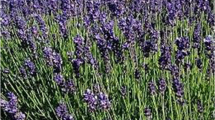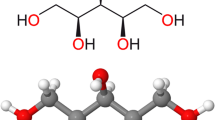Abstract
The effect of garlic (Allium sativum) and cabbage (Brassica oleracea var. capitata) extracts on the healing of gastric ulcer in experimental rats has been investigated. Thirty-three albino male rats (115 ± 4 g B.Wt. each) were used and divided into 6 groups (n = 6 rats); one was used as a negative control while the others were given aspirin orally (200 mg/kg B.Wt.). One of these groups was employed as a positive control and the others were administrated with 150 or 300 mg/kg B.Wt. doses of garlic and cabbage juice for 7 days. The length of the gastric ulcer, the volume of gastric juice, the total acidity, the pH value, the total bacterial count, and the histopathological changes of the stomach were examined. Results revealed that oral administration with both tested plant extracts reduced the length of gastric ulcer, the total acidity, the volume of gastric juice, the bacterial count, and the histopathological changes caused by aspirin. On the other hand, both aqueous plants extract increased the pH value of gastric juice. It is concluded that, garlic and cabbage extract could be used for healing acute gastric ulcer.






Similar content being viewed by others
References
Adeniyi BA, Anyiam FM (2004) In vitro anti-Helicobacter pylori potential of methanol extract of Allium ascalonicum Linn. (Liliaceae) leaf: susceptibility and effect on urease activity. J Phytother Res 18(5):358–361
Agrawal AK, Rao CV, Sairman K, Joshi VK, Goel RK (2000) Effect of Piper longum linn, Zingiber officianails linn and Ferula species on gastric ulceration and secretion in rats. J Exp Biol 38(10):994–998
Akhtar AH, Ahmed KU (1995) Anti-ulcerogenic evaluation of the methanolic extracts of some indigenous medicinal plants in Pakistan on aspirin-ulcerated rats. J Ethnopharmacol 46(1):1–6
Allison MC, Howatson AG, Caroline MG (1992) Gastrointestinal damage associated with the use of nonsteroidal antiinflammatory drugs. N Engl J Med 327:749–754
AOAC (1995) Official methods of analysis of the association of official analytical chemists, 16th edn. AOAC International, Washington, p 936
Armitage P, Berry G (1987) Statistical methods in medical research. Black well, Oxford, pp 93–213
Baibekov IM, Mavlian RS (1986) Morphological research on the effect of vagotomy on the parietal micro-flora of the stomach and duodenum. J Biull EKP Biol Med 101(4):496–498
Block E (1985) The chemistry of garlic and onions. J Sci Am 252:114–1192
Caldwell DR, Danzer CJ (1988) Effects of allyl sulfides on the growth of predominant gut anaerobes. J Curr Microbiol 16:237–241
Carleton H (1976) Histopathological technique, 4th edn. London. Oxford University Press, New York
Cellini L, Di Campli E, Masulli M, Di Bartolomeo S, Allocati N (1996) Inhibition of Helicobacter pylori by garlic extracts (Allium sativum). J FEMS Immunol Med Microbiol 13(4):273–277
Chapman D, Castilla R, Campbell L (1959) Evaluation of protein in food: a method for the determination of feed efficiency ratio. Can J Biochem Phys 37:679–686
Cheney G (1949) Rapid healing of peptic ulcers in patients receiving fresh cabbage juice. Cal Med 70(1):10–15
Chen-Road H, Su-Lin N (1997) Acid-induced gastric damage in rats is aggravated by starvation and prevented by several nutrients. J Nutr 127(4):630–636
Chung JG, Chen GW, Wu LT (1998) Effects of garlic compounds diallyl sulfide and diallyl disulfide on arylamine N-acetyltransferase activity in strains of Helicobacter pylori from peptic ulcer patients. Am J Chin Med 26:353–364
David HA, William FS, Dennis MB (2002) Manual of nutritional therapeutics, 4th edn. Lippincott Williams & Wilkins Comp, London, pp 409–415
Didry N, Dubreuil L, Pinkas M (1992) Antimicrobial activity of naphthoquinones and Allium extracts combined with antibiotics. J Pharm Acta Helv 67(5–6):148–151
Difco’s M (1971) Difco’s Manual of dehydrate culture media and reagent for microbiological and Chemical Laboratoric Procedures. Difco laboratories. Detroit, Michigan, USA Ernst E (1999) Is garlic an effective treatment for Helicobacter pylori infection. J Arch Inter Med 159:2484–2485
Feldberg RS, Chang SC, Kotik AN, Nadler M, Neuwirth Z, Sundstrom DC, Thompson NH (1988) In vitro mechanism of inhibition of bacterial growth by allicin. J Antimicrob Agents Chemother 32:1763–1768
Fenwick GR, Hanley AB (1985) The genus Allium-part 3. Medicinal effects. CRC Crit Rev Food Sci Nutr J 1:1–74
Fuchs CS, Mayer RJ (1995) Gastric carcinoma. J Med 333:32–41
Gowsala PS (2001) Protection against Helicobacter pylori and other bacterial infections by garlic. J Nutr 131:1106S–1108S
Graham DY, Anderson SY, Lang T (1999) Garlic or jalapeno peppers for treatment of Helicobacter pylori infection. Am J Gastroenterol 94:1200–1202
Hughes BG, Lawson LD (1991) Antimicrobial effects of Allium sativum L. (garlic), Allium ampeloprasum (elephant garlic), and Allium cepa (onion), garlic compounds and commercial garlic supplement products. J Phytother Res 5:154–158
Jain RC (1993) Antitubercular activity of garlic oil. J Indian Drugs 30:73–75
Jensen DM, You S, Pelayo E (1992) The prevalence of Helicobacter pylori and NSAID use in patients with severe UGI hemorrhage and their potential role in recurrence of ulcer bleeding. J Gastroenterol 102:A90
Jimenez E, Bosch F, Galmes JL, Banos JE (1992) Meta-analysis of efficacy of zinc acexamate in peptic ulcer. Digestion 51:18–26
Khosla P, Karan RS, Bhargava VK (2004) Effect of garlic oil on ethanol induced gastric ulcers in rats. J Phytother Res 18(1):87–91
Lawson DL (1996) The composition and chemistry of garlic cloves and processed garlic. In: Koch HP, Lawson DL (eds) Garlic: the Science and Therapeutic Applications of Allium sativum L. and Related Species, 2nd edn. Williams & Wilkins, Baltimore, pp 37–107
Mahachai V, Thomson AB, Vilaichone RK (2004) Effect of Helicobacter Pylori infection and NSAIDs on the risk of peptic ulcer bleeding. J Med Assoc Thai 87(2):295–299
Mahony R (2005) Bactericidal and anti-adhesive properties of culinary and medicinal plants against Helicobacter pylori. Centre Infect Dis Int Health 11(47):7499–7507
Noess K (1984) Ulcer-fiber-cabbage and vitamin U. Tidsskr Nor Laegeforen 106:693–694
Nostro A (2006) Effects of combining extracts (from propolis or Zingiber officinale) with clarithromycin on Helicobacter pylori. Phytother Res 20(3):187–190
Oxoid M (1979) The Oxoid manual of culture media and laboratory services. Forth Edition
Patty I, Benedek S, Deak G (1982) Controlled trial of vitamin A therapy in gastric ulcer. Lancet 2(8303):876
Patty I, Tarnok F, Simon L (1984) A comparative dynamic study of the effectiveness of gastric cytoprotection by vitamin A, De-Nol, sucralfate and ulcer healing by pirenzepine in patients with chronic gastric ulcer (a multiclinical and randomized study). Acta Physiol Hung 64:379–384
Rees LP, Minney SF, Plummer NT, Slater JH, Skyrme DA (1993) A quantitative assessment of the antimicrobial activity of garlic (Allium sativum). World J Micrbiol Biotechnol 9:303–307
Reuter HD, Koch HP, Lawson DL (1996) Therapeutic effects and applications of garlic and its preparations. In: Koch HP, Lawson DL (eds) Garlic: the Science and Therapeutic Applications of Alliu sativum L. and Related Species, 2nd edn. Williams & Wilkins, Baltimore, pp 135–212
Shin JE (2005) In vitro inhibitory effect of flavonoids on growth, infection and vacuolation of Helicobacter pylori. J Pharm 71(3):197–201
Sivam GP, Lampe JW, Ulness B, Swanzy SR, Potter JD (1997) Helicobacter pylori in vitro susceptibility to garlic (Allium sativum) extract. J Nutr Cancer 27(2):118–121
Standard Methods for the Examination of Dairy Products (1960) American health Association pub
Suadicani P, Hein HO, Gyntelberg F (1999) Genetic and life-style determinants of peptic ulcer. A study of 3387 men aged 54 to 74 years: The Copenhagen Male Study. Scand J Gastroenterol 34:12–17
Thaly H (1965) A new therapy of peptic ulcer: The anti-ulcer factor of cabbage. Gaz Med Fr 72:1992–1993
Uwins C (2006) Growth-induced changes in the proteome of Helicobacter pylori. J Pharm 27(5–6):1136–1146
Walsh JH, Peterson WL (1995) The treatment of Helicobacter pylori infection in the management of peptic ulcer disease. New Engl J Med 333:984–990
Wang YC (2005) Screening of anti-Helicobacter pylori herbs deriving from Taiwanese folk medicinal plants. Dep Food Sci 43(2):295–300
Acknowledgments
The authors extend their appreciation to the Deanship of Scientific Research at King Saud University for funding the work through the research group project Number RGP- VPP- 007.
Author information
Authors and Affiliations
Corresponding authors
Rights and permissions
About this article
Cite this article
Ben Hadda, T., ElSawy, N.A., Header, E.A.M. et al. Effect of garlic and cabbage on healing of gastric ulcer in experimental rats. Med Chem Res 23, 5110–5119 (2014). https://doi.org/10.1007/s00044-014-1092-z
Received:
Accepted:
Published:
Issue Date:
DOI: https://doi.org/10.1007/s00044-014-1092-z




